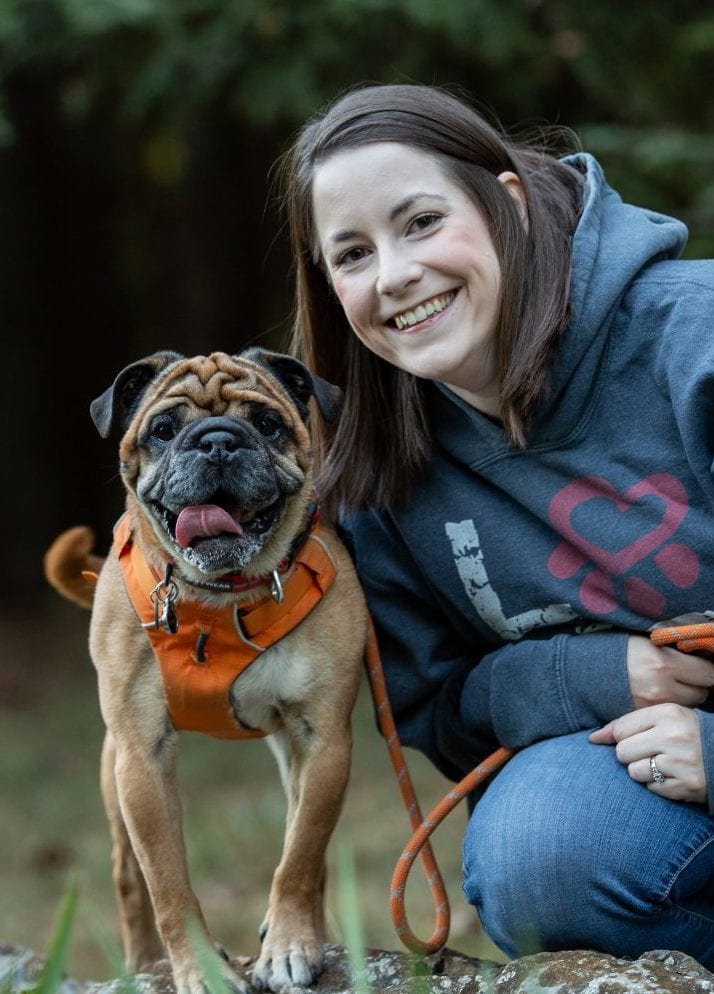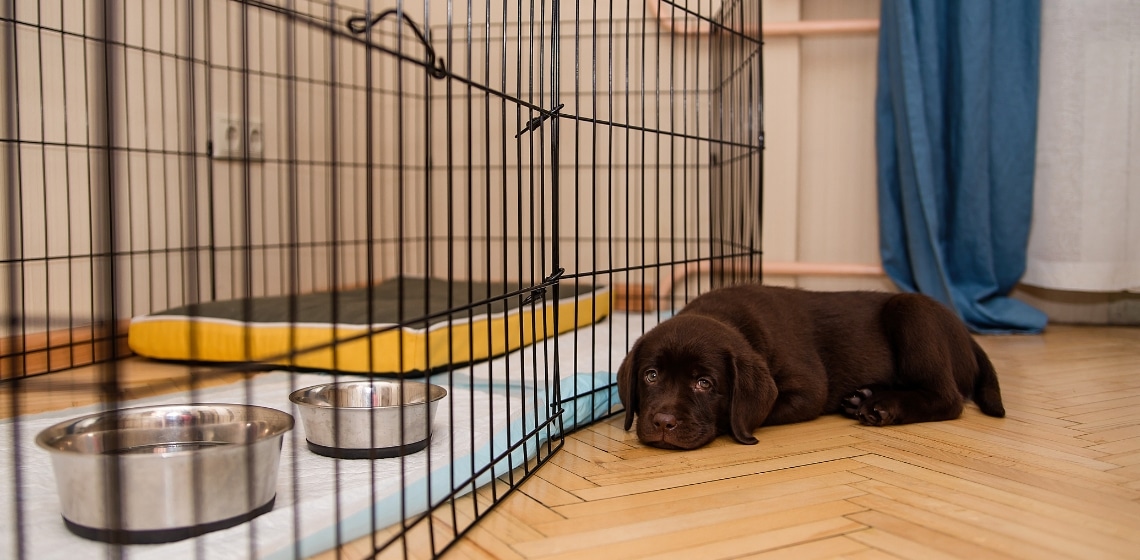Table of Contents
How to Crate Train a Puppy?
Although crate training an older dog is possible, it’s much easier to start crate training a puppy as soon as you bring them home. It’s important to teach your dog to associate crating with comfort and security by following some of the crate training procedures outlined below.
Crate Training Basics
One of the most critical aspects of crate training is ensuring that you always create positive associations with the crate. You can make your puppy’s crate comfortable with bedding, a soft blanket, or a favorite toy. You should initially always offer food inside the crate. Be sure never to use the crate as punishment as you want to create a positive association with the crate.
Getting Started with Crate Training
- Pick a location. Select a quiet place in your home to keep the dog’s crate. Some people keep the crate in a separate room, while others choose to keep the crate in the corner of the main living space. You could also keep a second crate in the bedroom if you opt for crate training at night.
- Use food. Start by feeding your dog their regular meals and offering any edible chews or food-stuffed toys inside the crate. For the first few days while you crate train your dog, keep the crate door open so that your puppy doesn’t feel confined and get overwhelmed.
- Gradually start closing the crate door. Once your puppy is comfortable entering the crate, begin quietly closing the door and walking away. Once your puppy has finished eating, immediately open the crate door to let them out.
Extending the Time
- Increase the crate time slowly. Start extending the time your puppy is inside the crate with the door shut by adding one or two minutes before you open the door after your puppy has finished eating. Gradually increase this time by working up to 5-10 minutes before you open the crate door. Most puppies will learn to relax after eating and understand its crate time.
- Open the crate when they’re quiet. Only open the crate door when your puppy can sit quietly without making noises. Opening the crate door when the dog whines or barks will teach them that the dog crate door opens when they’re loud, which isn’t what you want. If your puppy is vocalizing, wait a few seconds until they’re quiet to open the crate door. If your puppy is frantic or appears in distress, let him out of the crate immediately and go back to the beginning steps of training and proceed more slowly.
- Train your puppy to be alone. To continue building on your puppy crate training process, pet owners can begin conditioning them to be comfortable in their crate alone and begin leaving occasionally. Put your puppy in its crate and begin leaving the house for 5-10 minutes. Even if you stand outside the house or walk to the mailbox, this will help your dog acclimate to being alone in his crate.
- Crate Training Schedule. Puppies thrive on routine, and a schedule added to your crate training process will help potty train your puppy. In addition to feeding your dog their regular meals inside the crate, you should work on their training skills at specific times throughout the day. Your dog will learn to be comfortable and relaxed in their crate at various times throughout the day.
Benefits of Puppy Crate Training
Crate training a puppy is simply the act of conditioning your pup to be calm and relaxed inside a crate. Crate training is often considered one of the single best things you can teach your dog. Even if you think you may not need it now, you and your pup will both likely benefit from it in the future.
- Helps with potty training. Using a crate can help with house training. Most puppies won’t use the bathroom where they sleep. If your puppy stays in their crate while you’re out, it’ll learn to wait until you take them outside.
- Provides a safe space. Households can get loud and busy with guests and children, which can be too much stimulation for some pups. Crating your puppy in a separate room provides a safe and calm space for your dog to take a nap while you’re busy entertaining.
- Keeps your dog calm. There will probably be times when your dog isn’t feeling well or needs to be kept calm and confined after a surgical procedure. Your pup will experience much less overall stress in these situations if they’ve already been fully crate trained and are happy inside a crate.
- Confines and contains your dog. Your dog’s crate can be helpful at home to keep your puppy from being destructive and chewing on things when you can’t watch them. In emergencies like evacuations, securing your dog prevents them from being lost or injured. Many shelters won’t accept dogs unless they’re in a crate.
Alternatives to Crate Training
There are alternatives to crate train your dog, though they don’t provide the same level of safety and security as a crate with four hard, fully enclosed sides does.
- Exercise pens. These are soft-sided collapsible pens without ceilings or tops, but they are usually more lightweight and easier to travel with than a crate.
- A dog-proofed room. Some people opt to puppy-proof entire rooms, like the laundry room or spare bathroom, and keep puppies secure by using a baby gate or closing the crate door. A whole room gives your dog more room to roam around than a crate, and you can set up separate food/water and elimination areas.
Every puppy is an individual, and it’s important not to overwhelm your puppy by rushing the crate training process. Most dogs are fully crate trained within three to six months.
Since puppies have small bladders, they shouldn’t be in a crate for more than two to three hours at a time. Adult dogs can be crated for 6-8 hours, but being in a crate longer than that can be physically and mentally damaging to a dog regardless of your dog’s age.
Crating your puppy at night can keep them safe and confined while working on potty training. Since puppies can’t hold their bladder very long, which is perfectly normal but be prepared to wake up every few hours to let him out of the crate for a potty break.

Alix is a veterinary technician turned dog trainer with over a decade of experience working with dogs. Although her educational background in animal science gave her a broad knowledge base, it was her own behaviorally challenging dog who helped her realize her passion in life is teaching dog owners how to live a better life with their dog. Using positive reinforcement based training techniques, Alix specializes in improving the dog and owner relationship by meeting all of the dog’s mental and physical needs to modify behavior problems like reactivity and aggression. Alix currently resides in Virginia with her husband and two dogs. In her free time, you can find her either reading a good thriller novel or out in nature camping and hiking with her family.








